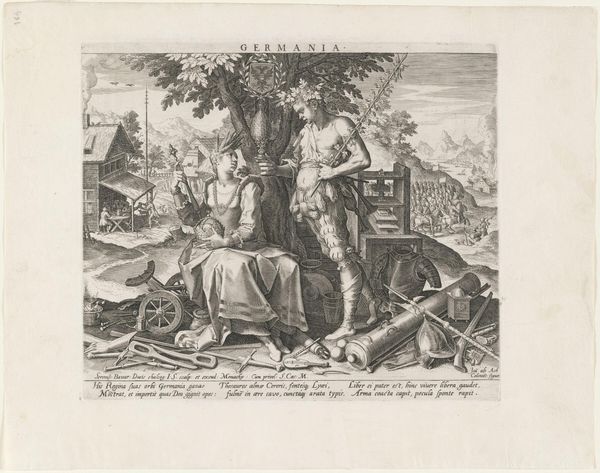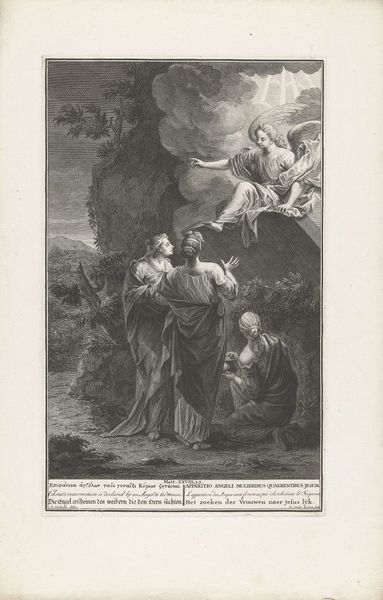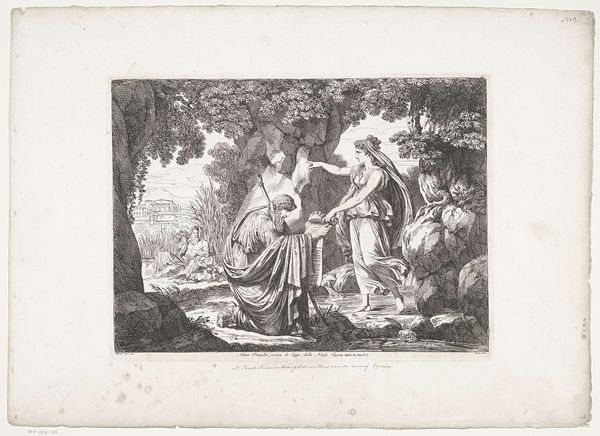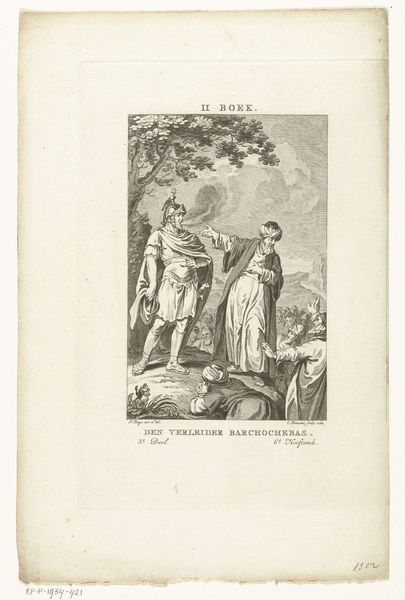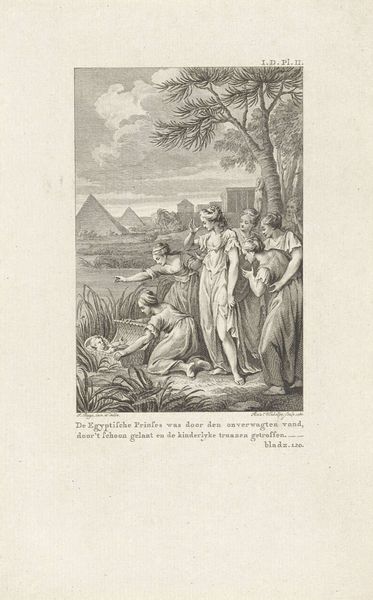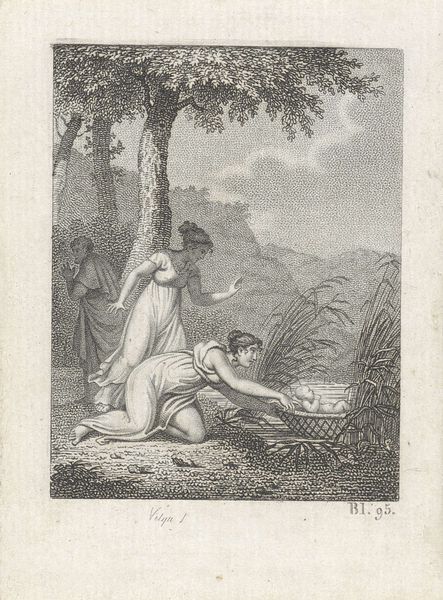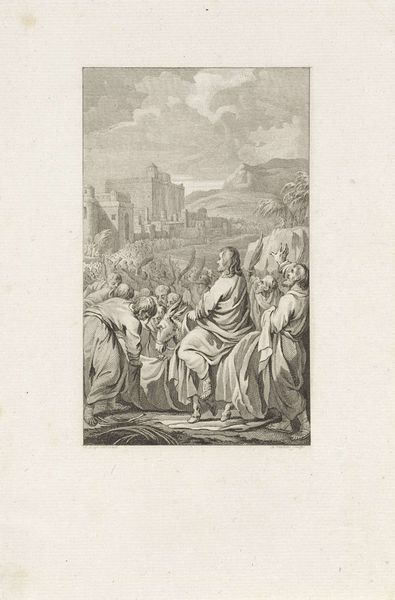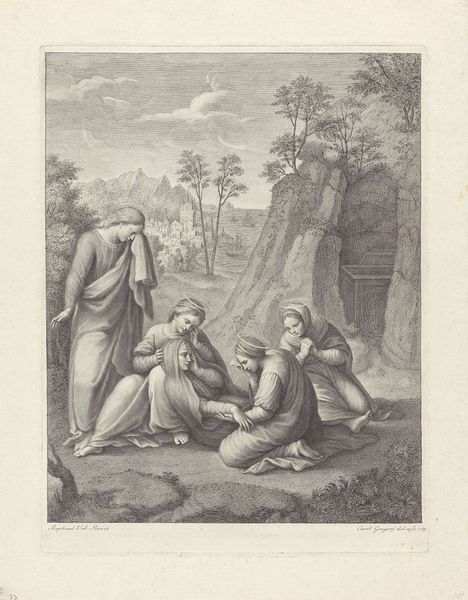
print, engraving
# print
#
old engraving style
#
landscape
#
mannerism
#
figuration
#
history-painting
#
engraving
Dimensions: height 214 mm, width 276 mm
Copyright: Rijks Museum: Open Domain
Curator: This is an engraving by Philips Galle, dating from sometime between 1557 and 1591, currently held at the Rijksmuseum. It depicts Ruth Kneeling Before Boaz. Editor: It has an intense, theatrical feel to it, almost stage-like, doesn’t it? The landscape feels a bit secondary, like a backdrop, especially with the characters so dominant in the foreground. The crispness of the lines creates such sharp definition! Curator: The scene represents a story from the Old Testament where Ruth, gleaning barley in the fields, is noticed by Boaz, a wealthy landowner. Galle was part of a larger movement of artists in the Netherlands focused on printmaking as a vehicle for religious and moral instruction. These biblical scenes circulated widely, reinforcing religious narratives and moral codes within society. Editor: Note how the figures are positioned! The kneeling Ruth, the commanding gesture of Boaz, it directs the viewer's eye. The lighting and composition emphasize their relationship. Consider also how the artist creates depth using linear perspective. It guides us from the immediate figures towards that more expansive landscape in the background. Curator: And the classical references! Though a biblical story, Galle renders the figures in a distinctly Mannerist style, evoking classical sculpture and architecture to lend authority to the narrative. It wasn’t unusual for artists of that era to combine both the classic and biblical. Editor: Look at the economy of line here. Everything is rendered with such precision, the drapery, the facial expressions. And in relation to our previous point about its theatrical feeling: consider the drama between those areas that are heavily textured in line and others which are sparse and light, and so open to interpretation! It’s beautiful! Curator: Reflecting on the engraving, I'm reminded of how these prints shaped popular understandings of biblical stories, encoding religious values within everyday visual culture. Editor: From a formalist point of view, Galle orchestrates a dance of lines and forms. It directs us to examine human relations which also become representative and symbolic.
Comments
No comments
Be the first to comment and join the conversation on the ultimate creative platform.




